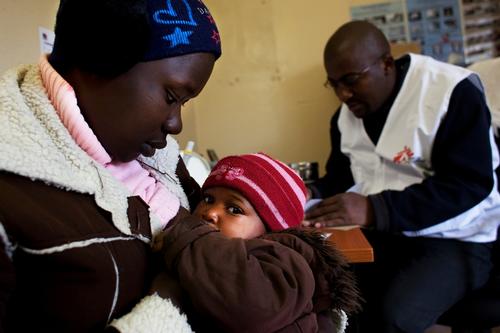MSF reaction to latest UNAIDS report on global progress of scaling up life-saving HIV treatment: 37 million people with HIV are eligible for treatment but still less than half (15.8 million) have access
Geneva – Médecins Sans Frontières (MSF) welcomes further global progress on getting HIV treatment to more people and urges all affected countries to take up new World Health Organization (WHO) ‘test and treat’ guidelines before next June’s UN High-level Meeting on HIV/AIDS, where donor governments should commit to a funding plan to close the global treatment gaps.
According to UNAIDS, 15.8 million people were on antiretroviral therapy (ART) as of June 2015, an increase of 2.2 million over the previous year.
“It’s good news the pace of HIV treatment scale-up continues to increase, with 2.2 million people newly started on treatment in one year, but to achieve the global goal of reaching 30 million people with treatment by 2020, we’re going to need to see three million new people on treatment each year,” said Sharonann Lynch, HIV and TB Policy Advisor for MSF’s Access Campaign. “Countries should waste no time and take up new WHO guidelines that call for all people living with HIV to be offered immediate treatment.”
MSF’s experience piloting ‘test and treat’ in Swaziland shows that starting people on HIV treatment whose immune systems have not yet significantly deteriorated is accepted among this group and also feasible in resource-limited contexts. Uptake was 82% among the group with a CD4 cell count above 500, which was comparable to the group with a count lower than CD4 500. MSF also implements test and treat in South Sudan.
In order for countries to upgrade and implement the WHO guidelines, there must be a mobilization of political will and financial support, especially for countries with low HIV treatment coverage that otherwise risk being left behind. While nearly half of people living with HIV worldwide have access to treatment, treatment coverage drops precipitously to less than 25% in countries such as Central African Republic, Chad, the Democratic Republic of Congo, and South Sudan.
“Governments that have funded global HIV treatment should be encouraged by the important progress achieved, but must now put up what’s needed to speed up scale-up, so every person living with HIV is offered treatment and is given the support that helps them stick to treatment for life,” said Lynch. “The success of ‘test and treat’ hinges on helping as many people as possible reach undetectable levels of HIV as early in their disease progression as possible.”




